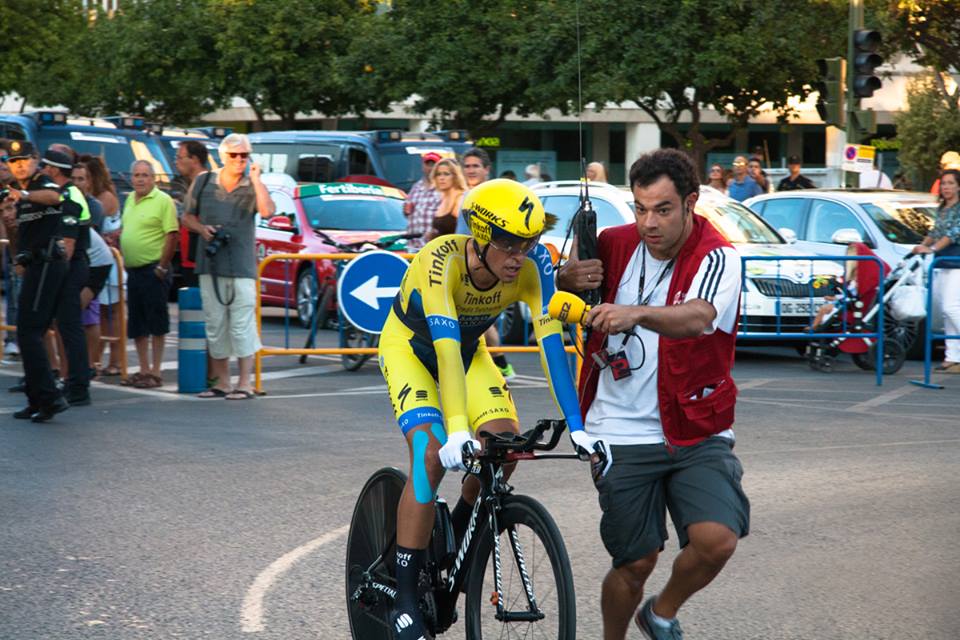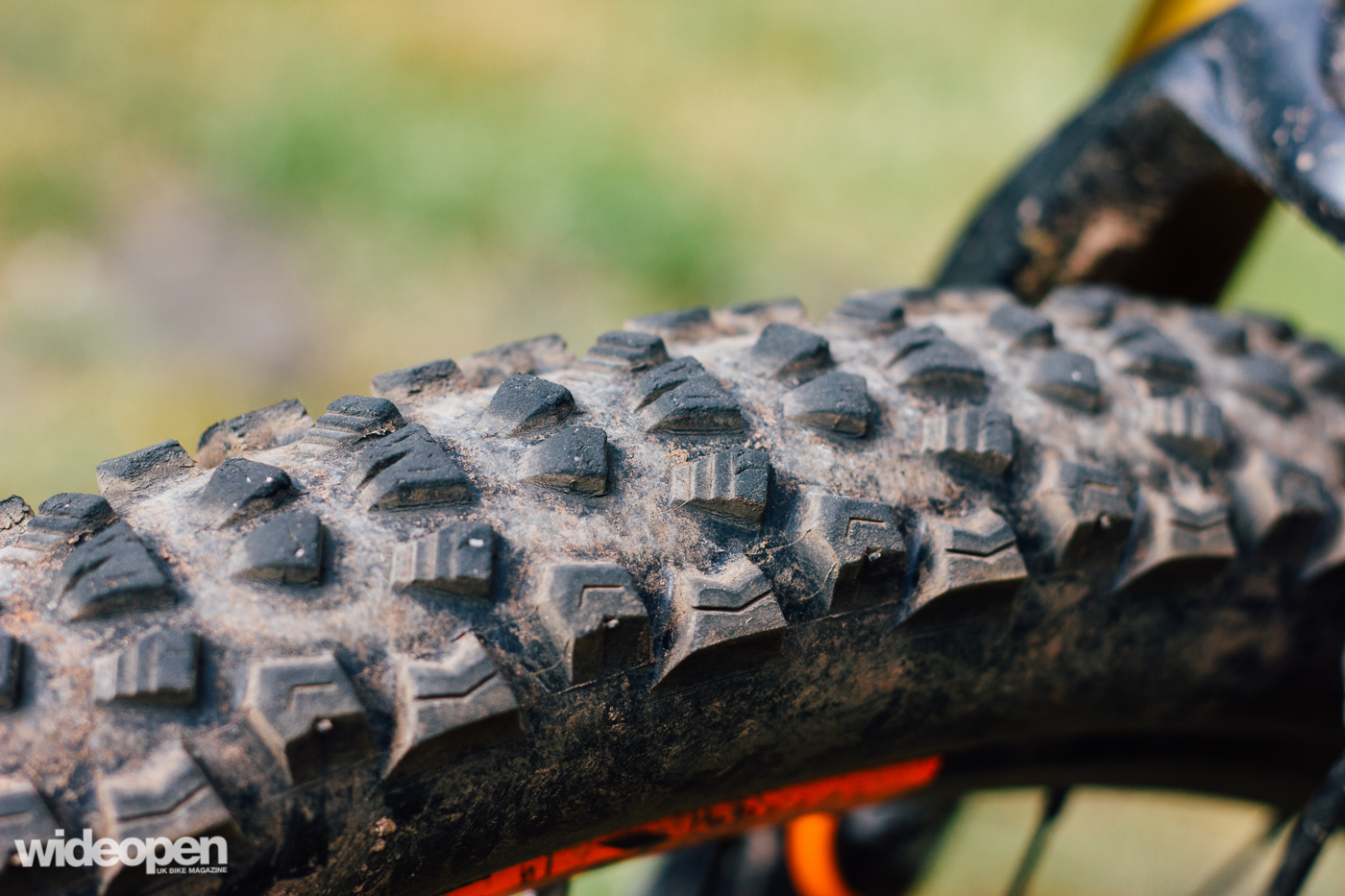Do you know your Maillot Jaunes from your Maillot Verts?
Or your Domestiques from your Soigneurs?
Nope? Well – read on for a mountain bikers guide to the Tour de France!
As I’m sure you guys are aware there’s a big bike race that started in the last week or so. Nope, not the World Cup DH, it’s the Tour de France. Whilst the thought of watching 198 lycra clad riders race a course of over 3,300km over the next three weeks might not fill you with joy you should give it a go – this years tour promises an exciting route which could lead to some explosive racing. There’s huge crashes, old men in weird costumes, ‘pitch’ invasions, journalists chasing on motorbikes and enough madness to make the downhill circus look tame by comparison!
Just to get you up to speed on the world of the Tour de France, we’ve put together a handy guide below.
Race facts:
- 102nd edition of the race
- Visits 3 countries [I thought it was the Tour de France – Ed.]
- 198 riders
- 3,360km total distance
- 22 stages
- 9flat stages
- 3hilly stages
- 7mountain stages including 5 summit finishes
- 1individual time trial
- 1team time trial
- 2rest days
- 23,000 gendarmes policing the race over 3 weeks
- 2,000 journalists working for 637 media outlets covering the race
- Over 12 million live spectators and 3.5 billion TV spectators
So I think the above demonstrates that this race is kind of a big deal. The best way to get an idea of what’s going on is to provide you with a brief glossary of the terms used during the race, the prizes on offer and the riders.
Prizes
- Yellow Jersey – The Malliot Jaune, the top prize of the race, wins €450,000 but normally gives that away to rest of his team for the support he receives (this is small change to the big guys who command salaries in excess of €3million a year plus additional personal sponsorship deals). Unlike in DH, this is based on the total time taken over the three week race. This tends to reward consistency over the ability to win stages – e.g if similar rules were put in place over the 2014 World Cup DH Sam Hill would’ve won with Ratboy relegated to 4th.
- Other jerseys – Green Jersey to the points winner, this does reward stage wins on flat stages and is aimed to go to the most consistent sprinter. Polkadot jersey to the best climber, who gains points by crossing high mountain passes first. White jersey to best young (under 25) rider.
- Stage wins – A stage win will bag you €22,500 and can often mark the high point of a riders career – you won’t struggle to get a contract next season if you’ve got a TdF stage win to your name, and you’ll win BBC SPoTY if you’ve got 22 like Mark Cavendish.
“Remember the last time you went to the Alps and you got the transfer bus from Geneva airport up to Morzine?
Imagine doing that on a bike but also riding up to Alp d’Huez and Les Arcs 1950 as well”
Types of stage:
- Flat – These are the stages for the sprinters, spinning the wheels at up to 75km/h (Gwin got the fastest speed at Lenzerheide quali’s – 66km/h) battling shoulder to shoulder to cross the line first.
- Hilly – These are the kind of stages where there are rolling hills and a plucky (™ TV commentators the world over) breakaway rider might win the stage in front of the main group, not enough to shake up the overall though.
- Mountain – These are the big days out. Remember the last time you went to the Alps and you got the transfer bus from Geneva airport up to Morzine? Imagine doing that same route on a bike but instead of just riding up to Morzine you also ride up to Alp d’Huez and Les Arcs 1950 as well. That’s probably the same amount of climbing as in a single mountain stage of the TdF. Expect to see the eventual winners going for it on these stages.
- Individual Time Trial – The one with the pointy hats – think of it like the time everyone wore lycra at DH races in 2008. Only one time trial on this years TdF and it’s already gone. This is probably the most similar style of racing to World Cup DH – every rider rides against the clock on their own, some like to refer to it as “the race of truth” as there’s no hiding when you’re on your own.
- Team Time Trial – Like the TT above but with your eight team-mates to help you out.
Favourites
- Alberto Contador – He wins a lot, but doesn’t seemed to be loved by the fans outside of his home country. This might have something to do with a dodgy steak he ate in 2010 – his excuse for failing a drug test that landed him a two-year ban from the sport.
- Chris Froome- Froomedog (as he’s known to his Team Sky Pro Cycling teammates) is GB’s great hope at the TdF. Although the 2013 winner is probably more comparable to Greg Minaar than Peaty being born in the African country of Kenya before switching to be a Team GB rider in 2008. Known for his “awkward” style on the bike, he doesn’t look like he should be as fast as he is. In fact he looks more like a praying mantis to be honest.
- Nairo Quintana – The young Colombian (again ™ TV commentators) doesn’t show a lot of emotion on the bike but is definitely a class act.
- Vincenzo Nibali – This Italian, last year’s winner, has come under a lot of scrutiny recently given that his team have had a number of riders suspended for doping so far this year and were close to be being closed down by the UCI.
- There are also a few French guys that the French press are going on about. But given that a French rider hasn’t won le Tour in 30 years we won’t bother discussing them here. Home advantage doesn’t seem to mean much in this race. Unlike in Downhill, French riders don’t seem to be a huge force on the scene.
British Riders
- Mark Cavendish – The Manx Missile as he’s known, being very fast at the pointy end of the race and being from the Isle of Man. You should expect to see Cav win at least a couple of stages, although some would suggest he’s losing his top end sprint speed (about 70km/h on a flat stage) now.
- Sir Bradley Wiggins – the owner of what are sometimes thought to be the best sideburns since Merv Hughes isn’t taking part this year. This is apparently because he’s concentrating on other things, but might be because he wouldn’t have a chance of winning anymore.
- Assorted others: There are eight other British riders in the TdF this year, but they’ll be working in support of others so we won’t mention them here.
Things to watch out for:
- Crashes – known as chutes in French, although we don’t want to see them they can sometimes be spectacular
- The devil – Didi Senft a crazy German who has been following the TdF wearing a devil costume for over 20 years.
- Domestiques – the guys who do the hard work in the peloton – look out for how many bottles they can carry at once.
- The scenery – for me this is what makes the tour – seeing the mountains, coastline and countryside of France.
And finally, here’s a list of things that don’t (or shouldn’t exist) in the TdF this year:
- Motors in bikes
- Drugs
- Dogs in roads
- Texans (That’s Lance Armstrong to you and me – Ed)
//Thanks to Paddy Tully for the words and photos. Paddy lives in Bristol and rides a Singular Buzzard. He’s currently keeping one eye on the Tour and the other on his new twins. Chapeau Paddy!
Want to watch daily tour highlights?
GoPro publish daily footage on Youtube and ITV run highlights at 7PM GMT as does British Eurosport throughout the day. Less “official” streams are available via google.
Inspired to get training for mountain biking on your road bike?






